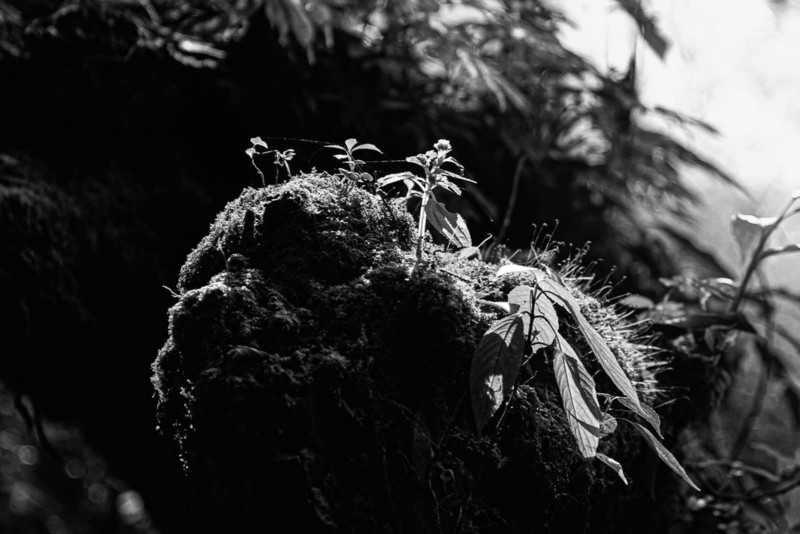
Capturing photos in black and white is quite a challenging task. It is certainly one of the most complicated fields of landscape photography. One needs to be very careful about the circumstances where the photos will actually look good in black and white.
Taking colors out of a scene is not easy, and one needs to make very subtle yet powerful decisions that the photos will speak more in the absence of colors. I have personally faced various challenges in black and white landscapes, so, in this article, I’ll share five important factors to be kept in mind for shooting stunning black and white landscapes.
1. Textures
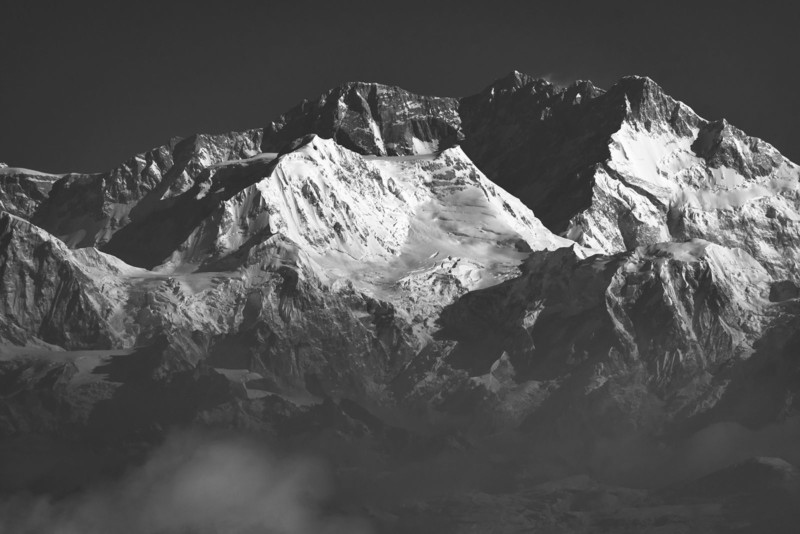
Yes, texture is the first and foremost point that I keep in mind for shooting in black and white. One will be able to tell a huge amount of stories with just textures in the frame. And by textures, I don’t just mean rocks and mountains — it also includes the simplest abstract textures found in nature or anywhere where there is unevenness in the frame.
In this photo taken from Sandakphu, the most famous mountains of The Sleeping Buddha Range are seen here — Mt. Kanchenjungha and Mt. Kabru. The textures on these famous mountains are awesome enough for getting tremendous black and white images.
2. Contrast
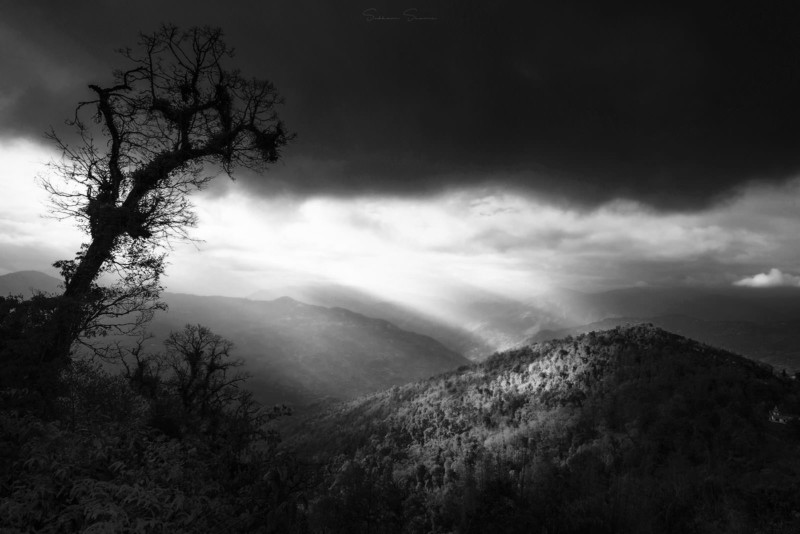
Where one cannot make differences with colors, contrast plays a very important role. One needs to carry out a lot of what is happening in the scene with the shadows and highlights.
In this image from Rishyap, the silhouette of the tree on the left provides contrast to the highlights of the image. Also, the varied contrast in the clouds makes the image an interesting one with the brighter left side and a darker right side, contrasting with the tree in the foreground.
3. Light
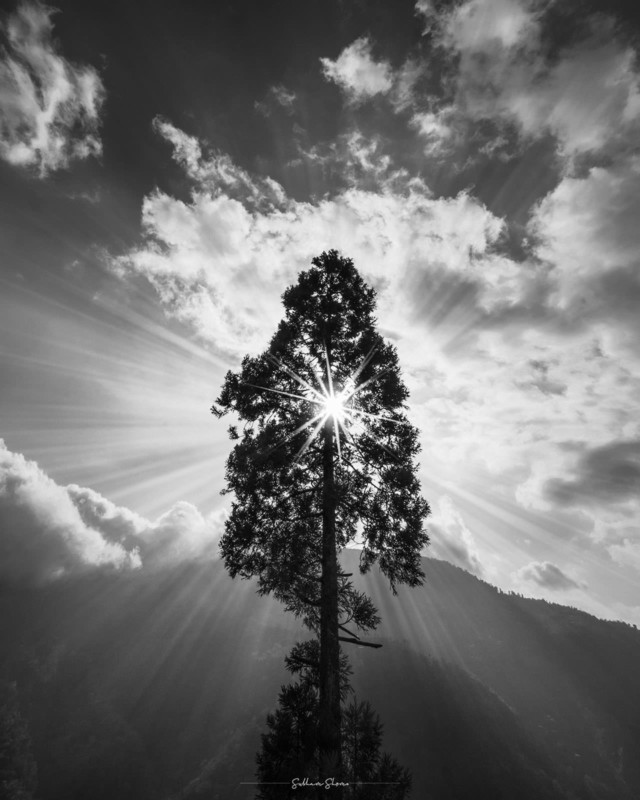
Light plays another superbly important role in black and white landscapes. The direction, orientation, and intensity of the light are significant in their own ways of creating great black and white images.
In this photo from Kolakham, I could get the Sun with a burst and the rays coming out of a cloud behind the tree, thus getting brilliant light all over the image. The only color in the image was blue, due to the blue skies and the cooler white balance which did not help in the development of the image. This is why I finally stuck to creating a black and white image out of this.
4. Composition

With not keeping the colors in mind and with the viewers not getting any colors in the frame, composition becomes utterly important while working with black and white landscapes! Various compositional techniques can be played with in these photos, and one can get extremely creative with compositions.
In this photo from Tumling, I had no color to play with, it was extremely dull and grey with very brownish fields, but when the clouds started to arrive and the tree was getting in and out of the clouds, I set up my composition and waited for this perfect moment to capture this tree with the road leading on in the side.
5. Shapes
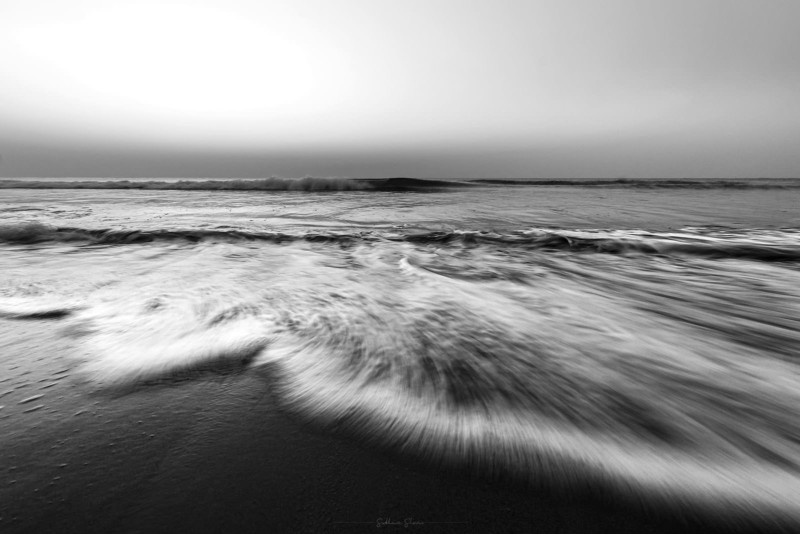
This is yet another factor to be kept in mind while taking long exposure photos of moving water in black and white. One will almost always get awesome shapes while working with waterscapes and this can be used to great advantage in black and white photos.
In this photo from Gopalpur, I could capture the shapes of the back-tracking water from the waves and give a unique look to the image.
Conclusion
So these were my favorite five tips for awesome black and white landscapes. One thing to be kept in mind is that black and white is different from monochrome. Black and white photos don’t have any colors in them other than all the shades of grey (including black and white)! Monochrome, on the other hand, is a technique to create an image with shades of the same color, which is essentially not grey.
About the author: Subham Shome is a landscape and travel photographer based in Agarpara Kolkata, West Bengal, India. The opinions expressed in this article are solely those of the author. You can find more of Shome’s work on his website, Facebook, and Instagram. This article was also published here.